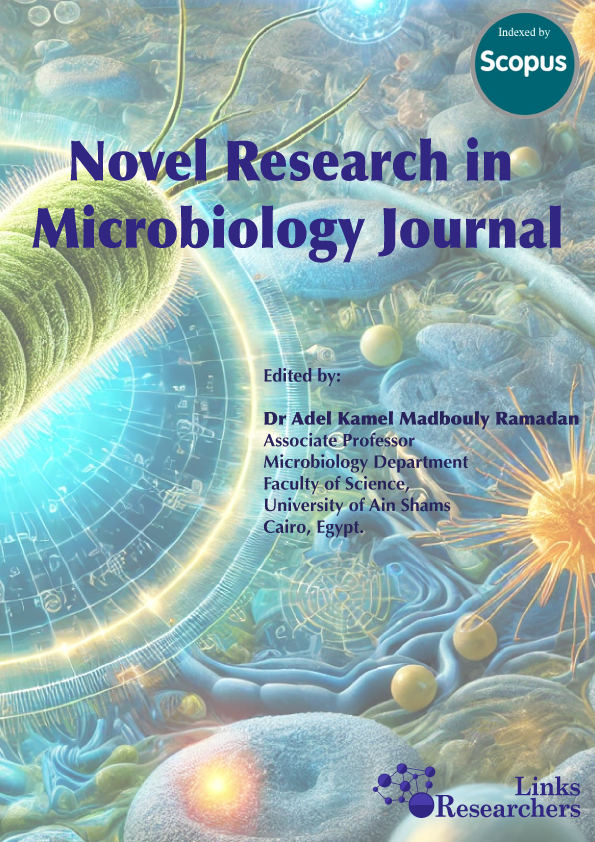Biosynthesis of Copper nanoparticles using bacterial supernatant optimized with certain agro-industrial byproducts
Novel Research in Microbiology Journal (2019), 3(6): 558-578
Biosynthesis of Copper nanoparticles using bacterial supernatant optimized with certain agro-industrial byproducts
Abd-Elhalim, B.T.1*; Gamal, R.F.1; Abou-Taleb, Kh.A.1; Haroun, A.A.2
ABSTRACT
Biosynthesis of green nanomaterials using microorganisms is considered clean, eco-friendly and viable, instead of the physical or chemical methods. This study aimed in the biosynthesis of copper nanoparticles (CuNPs) exploiting Egyptian local bacterial isolates. Sixteen copper-resistant isolates out of 160 bacterial isolates; were captured from various plant rhizospheres including; chamomile, hibiscus, neem, iris, and pea, beside samples collected from the Sharm El-Sheikh seawater. Among the 16 copper-resistant isolates, one promising isolate I108 was chosen which synthesized CuNPs of diameter about 87.1 nm, showed UV absorbance of 0.54 at 580 nm, with a concentration of 12.21 mg l. This isolate was characterized by phenotypic and genotypic features. Based on 16S rRNA gene analysis and compared with the sequences presented in NCBI GenBank, the phylogeny positions assessment confirmed that it belonged to Genus Pseudomonas, and was closely related to Pseudomonas silesiensis strain A3 (98% similarity). For the bacterial synthesis of CuNPs, optimization of the P. silesinsis strain A3 cell-free supernatant was carried out using seven agro-industrial residues, added to the basal medium as different carbon sources. Results showed that 2% blackstrap sugar cane molasses was the most efficient carbon source for CuNPs biosynthesis, when incubated for at 30°C for 24 h using shaking speed of 120 rpm. The biosynthesized CuNPs has a size of 66.12 nm at a concentration of 19.2 mg l, and maximum surface plasmon peak (SPR) of 0.85.
To share on other social networks, click on any share button. What are these?





